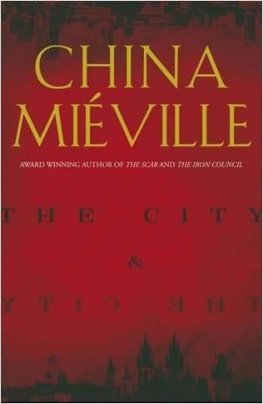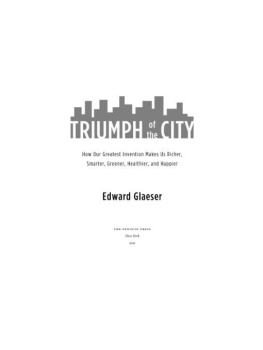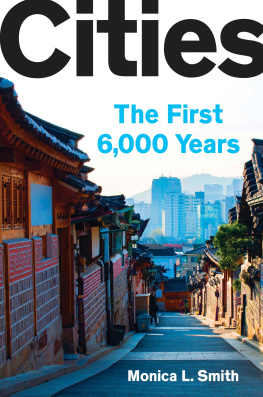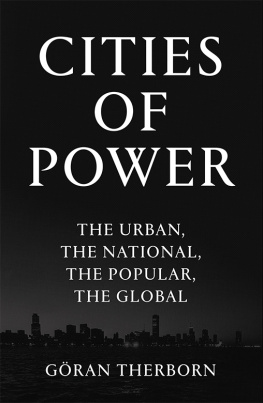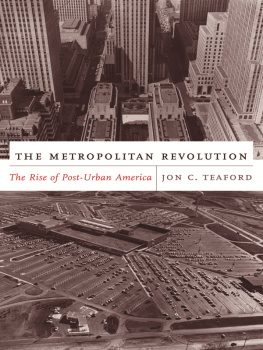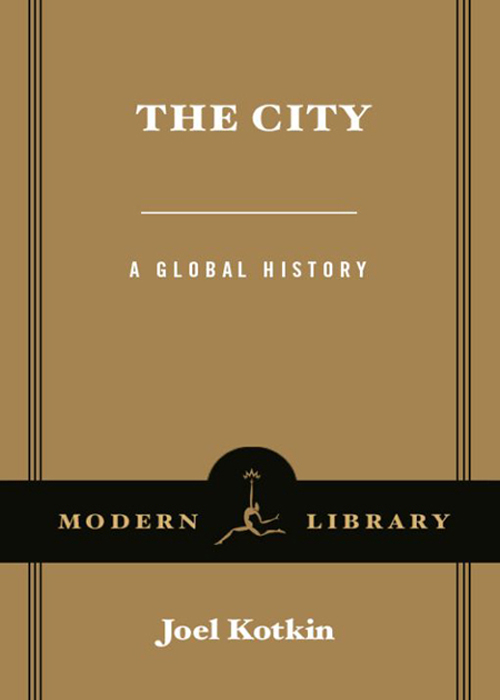
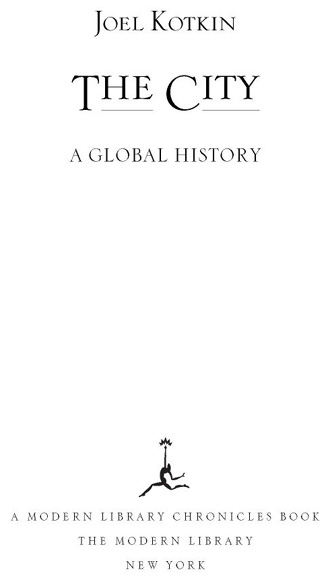
Table of Contents
TO MY BROTHER, MARK
Praise for THE CITY
Provocative... Kotkin distills a lifetime of learning into 160 pages.... Everyone who loves cities and recognizes in them mans greatest promise and his greatest challenges will enjoy this book. It belongs on every boosters required reading list. Richmond Times-Dispatch
[The City] is a bracing book, one whose theses and arguments must be taken seriously and dealt with by anyone who wishes to forecast the urban future, or even describe what is going on today.The New York Sun
Bold... a strategic, accessible narration of urbanism in general from ancient Mesopotamia to the present.Booklist
Useful... a thoughtful survey, of interest to students of urban affairs and of world history alike.Kirkus Reviews
[The City] is a quick ride through fertile territory.... The questions Kotkin raises about the future of our civilization, based as it is on a particular form of urban living, deserve deep deliberation.The American Enterprise
If you want to understand why the future of American and European cities is mixed at best, if you want to understand why George Bush won the 2004 election, you need to read Joel Kotkins account of how and why cities have developed and declined. FRED SIEGEL, author of Prince of the City:Giuliani, New York, and the Genius of American Life, senior fellow at the Progressive Policy Institute
Unique and powerful insights into urban life... This book is a great read. BOB LANIER, mayor of Houston, 19921998
PREFACE
The evolution of cities embodies the story of humanity as it rose from primitive origins to impose itself on the world. It also represents, as the French theologian Jacques Ellul once noted, mans fall from natural grace and the subsequent attempt to create a new, workable order.
Cain has built a city, Ellul wrote. For Gods Eden he substitutes his own. This striving to create a new kind of man-made environment occupied the original city builders from Mesoamerica to China, North Africa, India, and Mesopotamia. In the process, they forged a social and moral order transcending the old tribal and clan relationships that previously had shaped human relationships.
Two central themes have informed this history of cities. First is the universality of the urban experience, despite vast differences in race, climate, and location. This was true even before instant communication, global networks, and ease of transportation made the commonality among cities ever more obvious. As the French historian Fernand Braudel once noted, A town is always a town, wherever it is located, in time as well as space.
The sixteenth-century diary of Bernal Daz, with which this book begins, reveals this in startling ways. A soldier with Corts, Daz encountered a totally alien urbanitythe great city of Tenochtitln, now Mexico Citythat still exhibited characteristics found in European cities such as Seville, Antwerp, or Constantinople.
Like a European metropolis, Tenochtitln was anchored by a great religious center, a sacred space. It lay in a well-defended, secure location that allowed for an intense city life. The great Aztec capital also boasted large marketplaces that, while offering many strange and exotic goods, still functioned in much the same way as their counterparts in cities across the Atlantic.
These commonalities can be seen in cities across the world today. Police forces, commercial centers, and religious establishments in East Asia or East Anglia or the vast suburbs of Los Angeles often operate in similar ways, occupy the same critical places in the metropolis, and even share common architectural forms. Then there is the visceral feel of the city almost everywherethe same quickening of pace on a busy street, an informal marketplace, or a freeway interchange, the need to create notable places, the sharing of a unique civic identity.
Many urban historians have identified this phenomenon with a particular kind of citythe densely settled, central urban area epitomized by New York, Chicago, London, Paris, or Tokyo. My definition is considerably broader and attempts to include as well many of the newer, sprawling metropolitan areas, such as my adopted hometown of Los Angeles, and also the many highly dispersed, multipolar metropolitan regions of the developing world. Although different in form from the traditional urban centers, these newer urban places all remain, in their essential characteristics, cities.
This leads to a second generalization about what characterizes successful cities. Since the earliest origins, urban areas have performed three separate critical functionsthe creation of sacred space, the provision of basic security, and the host for a commercial market. Cities have possessed these characteristics to greater or lesser degrees. Generally speaking, a glaring weakness in these three aspects of urbanity has undermined life and led to their eventual decline.
Today, different cities in the world fulfill these functions with varying degrees of success. In the sprawling cities of the developing world, lack of a functioning economy and a stable political order loom as the most pressing problems. In many cases, people there still retain strong family ties and systems beliefwhether ancient folk religions, Christianity, Islam, or Buddhismbut the basis of the material city has been undermined. This gives rise to a new historical phenomenon, the large city that grows without the familiar accrual of prosperity or power.
The essential problems facing urban regions in the West, and increasingly the developed parts of East and South Asia, are of a different nature. Cities in these regions are frequently relatively safe and, when their suburban rings are included, remarkably prosperous by historical standards. Yet these cities increasingly seem to lack a shared sense of sacred place, civic identity, or moral order.
Nothing better illustrates this than the rapid general decline in middle-class families in many of the worlds most important urban cores. Today, elite cities often attract tourists, upper-class populations working in the highest end of business services, and those who can service their needs, as well as the nomadic young, many of whom later move on to other locales. This increasingly ephemeral city seems to place its highest values on such transient values as hipness, coolness, artfulness, and fashionability.
These characteristics, however appealing in their aspect, cannot substitute for the critical, longer-lasting bonds of family, faith, civic culture, and neighborhood. Nor can a narrow transactional or recreational economy play the same role as one based on a broad diversity of industries nurturing the ambitions of upwardly mobile families. Increasingly, these families seek refuge ever farther from the urban core, often in the periphery or in smaller towns outside the urban realm.
These phenomena do not represent as severe a challenge as the miserable poverty and instability common to the cities of the developing world. Yet the study of urban history also suggests that even affluent cities without moral cohesion or a sense of civic identity are doomed to decadence and decline. It is my hope that contemporary citieswherever they are locatedcan still find ways to perform their historic functions and thus make this century, the first where a majority of people live in cities, an urban century not only in demographic terms but also in more transcendent values.
Next page

